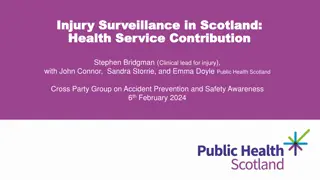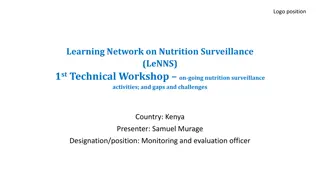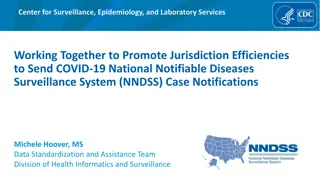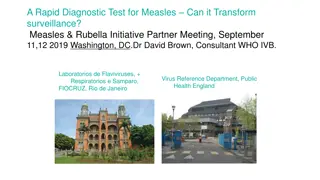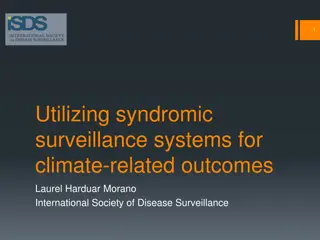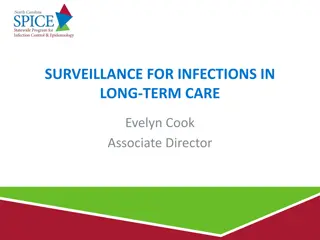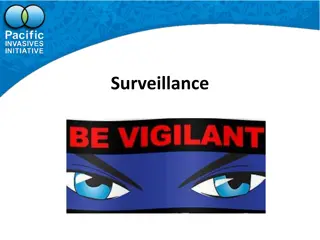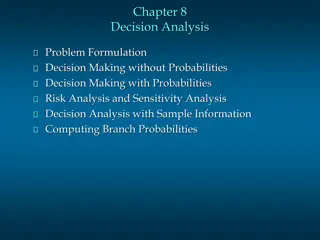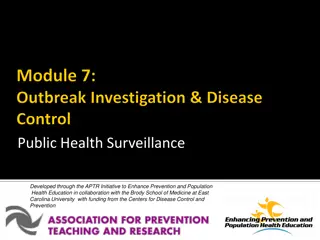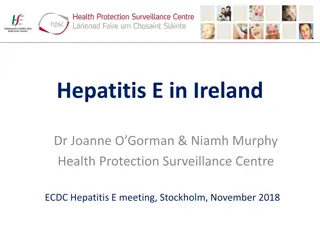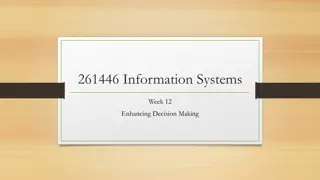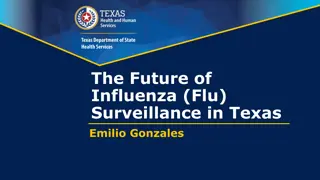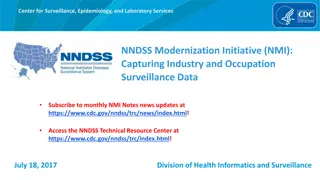Challenges in Decision-Making with Multiple Surveillance Systems
Handling data from various surveillance sources is a complex task in the Democratic Republic of the Congo (DRC), where multiple systems exist such as the National Surveillance System and EPI Surveillance System. This involves navigating different perspectives and overcoming challenges to consolidate and analyze data to inform strategic decisions effectively.
Download Presentation

Please find below an Image/Link to download the presentation.
The content on the website is provided AS IS for your information and personal use only. It may not be sold, licensed, or shared on other websites without obtaining consent from the author.If you encounter any issues during the download, it is possible that the publisher has removed the file from their server.
You are allowed to download the files provided on this website for personal or commercial use, subject to the condition that they are used lawfully. All files are the property of their respective owners.
The content on the website is provided AS IS for your information and personal use only. It may not be sold, licensed, or shared on other websites without obtaining consent from the author.
E N D
Presentation Transcript
DRC Challenges with Multiple Surveillance Systems How to make decision from multiple surveillance data sources
Overview 1.DRC context 2.National Surveillance System 3.Different Surveillance Systems 4.EPI surveillance system 5.Challenges to multiple surveillance systems 6.Perspectives
1.DRC Context 1.DRC Context Surface: 2 .345.000 Km2 Country subdivided in 26 regions with 517 Health Districts. Maternal and infants mortality rates in regression: 148/ 1000NLB(EDS 2010) to 104/1 000 NLB (EDS II 2013- 2014) Routine immunization in progress Country certified free of poliovirus circulation by the ARCC in November 2015 (4 years without detection of WPV) Measles follow up campaigns organized in 2013 and 2014 Measles follow up campaigns planned for July 2016 Strategic plan of measles elimination 2013-2020
MAP OF SUBDIVISION OF DRC IN 26 REGIONS UNTIL 2015 Population total: 89 046 900 Nord Ubangi Bas Uele Haut Uele Sud Ubangi Mongala Ituri Population under five year: 16 829 864 (18,9%) Tshopo Equateur Tshuapa Population under one year: 3 561 876 (4%) Nord Kivu Mai Ndombe Maniema Sud Kivu Sankuru Kwilu Kasai Kongo Central Lomami Kasai Oriental Tanganyika Kwango Haut Lomami Katanga Lualaba Haut Katanga
1/3 Structures of Health system and vaccination in DRC 1/3 Structures of Health system and vaccination in DRC Ministre Building health policy and follow up and national coordination General D1 D2 DLM D13 National Level EPI Nat. Provide technical support and follow up and evaluation of strategy planned 11Coor. EPI Sub national level Health Prov Division 44 Ant.EPI Health Facility level : implement the national health policy by giving minimal package activities as well as vaccination 516 HZ CENTRAL OFFI Operational level 8.830 Health Zones 5 5
2. National Surveillance in DRC Communities (CR, PA, Traditional Healers) To search for suspect cases during home visit with a simple definition Active search, investigation, reporting to Central office of Health Zone Health Centers, Hospitals (Nurses, Doctors) Health Zones offices (Doctors, Nurses, Community Leader) Active search , active monitoring, investigation, validation of cases, feed back, reporting to sub level Directives, Active monitoring, investigation, reporting to national level, feed back to health Zones Sub Level (4th office, EPI coordinators, EPI antenna) National Level ( 4th direction, EPI direction ) Analyze, Active monitoring, Investigation, retro information, 6
3. Different Surveillance Systems in DRC In DRC each program has his own surveillance system: (Vaccine preventable diseases, Malaria, TB, HIV, etc) Each of these systems has own data collection tools Same reporting sites (health facilities) Same reporting flow However all are conducted by 4th Direction ( Direction of control diseases) National system sanitary information(very huge)
3/1. Description of Network surveillance ISDR :Integrated Surveillance Disease and response The 4th Direction is responsible of all diseases surveillance throughout DRC. ~17 outbreak-prone diseases with weekly notification Includes measles and others VPDs ( Polio, Yellow fever, Measles, Tetanus, etc ) Primary purpose is to identify the abnormal increase in cases over the base line This surveillance is based on the attendance, it doesn t give details on the case
3/2:Description of Network Surveillance Investigated after the confirmation cases by laboratory diagnosis Data collection tools Health facilities are reporting weekly on 17 outbreak-prone diseases Reported to the office of Health District which report to the regional level after the regional level send to the national level. Taking time to take decision Health facilities delay reporting
4. EPI Surveillance system EPI uses ISDR reported each week Second system built on the AFP surveillance system for other VPDs (measles, yellow fever, tetanus, etc.) EPI added data collection tools to obtain data on status of vaccination Using community to detect the cases Identical reporting Case-based surveillance contains information about person, age, sex, status of vaccination, issue. Can use for main analysis and localization of cases
5.Challenges Multiple data collection tools Poor data quality Delay in detecting cases Lack of coordination of different financial resources of surveillance Lack of prioritization of surveillance by the community We must sustain case-based, active surveillance but hard Must start including others VPDs, such as yellow fever and neonatal tetanus
6. Perspectives Reinforce the national system of sanitary information Harmonization between integrated diseases surveillance and cases based systems Strengthen the surveillance system in the way of the effective elimination of measles by 2020 (DRC strategic plan of measles elimination 2013-2020



